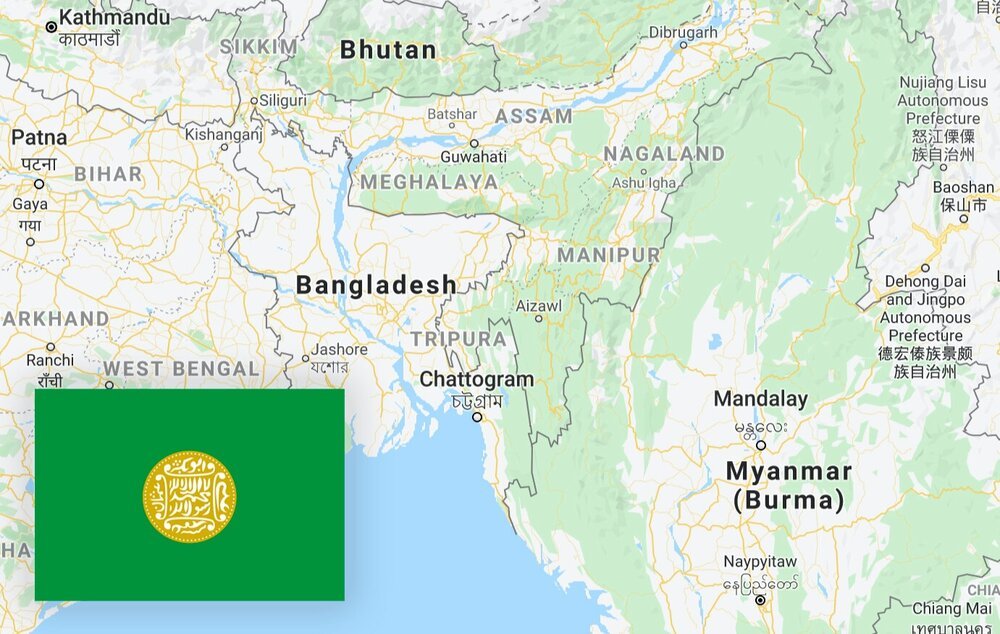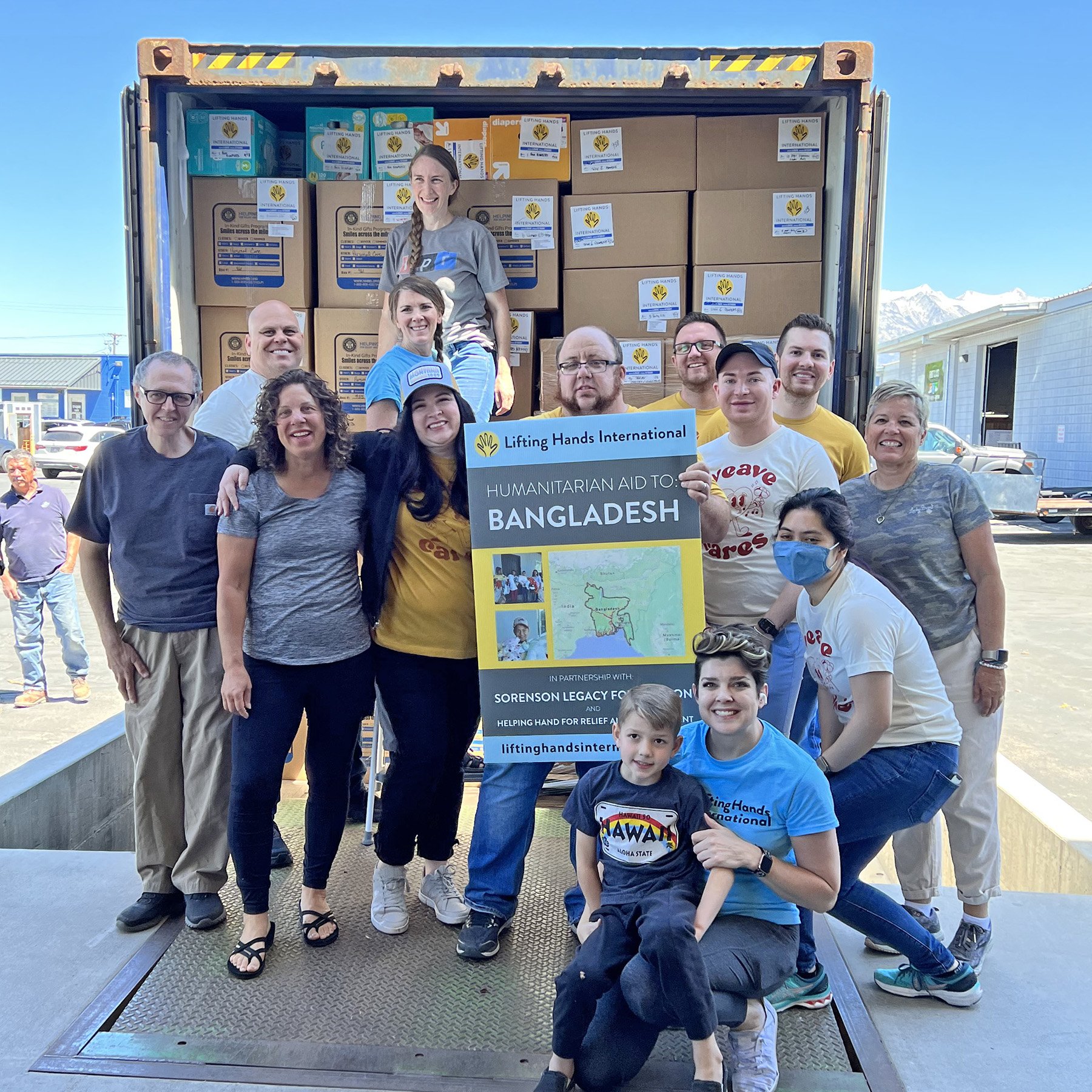by Brigid Rowlings, LHI Communications Director
LHI Founder and Director Hayley Smith visited Rohingya refugees living in refugee camps in Bangladesh in 2017.
Before I started researching this blog post, I had no idea what an emotional experience it would be. I was shocked and saddened by simply reading the history of the Rohingya, a religious and ethnic minority from Rakhine State in the country of Myanmar (or Burma, the commonly accepted name of the country prior to 1989, and the name that some people within and outside of the country prefer to use). Those feelings were only compounded when I found this online exhibition from the United States Holocaust Memorial Museum that tells the story of the Rohingya through their own words, photos, and cell phone videos.
A Quick History of Burma/Myanmar
Prior to joining the LHI team, I was a History and Social Studies teacher. That makes me prone to believe that to understand the present, you have to first understand the past. So, let me give you a quick history lesson. Like many countries in Southeast Asia, Burma was colonized in the 19th century. Although the Burmese fought to maintain their independence, they ultimately lost their autonomy to the British in 1885. As a British colony, Burma became a target of the Japanese during the Second World War. Battles raged in the country, causing mass destruction and hundreds of thousands of civilian casualties. Finally, a few years after the end of World War II, Burma declared its independence in 1948.
Initially, Burma operated as an independent republic, but in 1962, the military staged a coup d’etat. Burma, or Myanmar as it has been called since 1989, has been under direct or indirect military control since then. This is when trouble for the Rohingya began.
The Rohingya: From Belonging to Marginalized
The Rohingya assert that they are a people indigenous to Rakhine State in western Myanmar. In fact, the name “Rohingya” may mean “inhabitant of Rohang”, the early Muslim name for Rakhine State. And, in the early days of Burmese independence, the first Prime Minister, U Nu, recognized the Rohingya as Burmese nationals. Rohingya people held public office, served as judges, and were police officers.
That all began to change when the military took over Burma. At that time, all people living in Burma had identity cards. The Rohingya’s cards identified them as Burmese citizens. But, in the early 1970s, the military began confiscating the Rohingya’s identity cards. This left them with no proof of citizenship.
Then, in 1982, the government passed a new citizenship law. This law excluded the Rohingya and other ethnic minorities from citizenship. Soon, the government refused to even call the Rohingya by that name, first identifying them as “Islam” and then, insisting that they were immigrants from Bangladesh, calling them “Bengali”.
Targeted Persecution
In 1991, the government launched a “Clean and Beautiful Nation” campaign. In reality, this was a campaign of violence against the Rohingya. The military killed and raped Rohingya people and destroyed their homes. 200,000 Rohingya fled to Bangladesh. In 1992, many Rohingya returned home to Rakhine State, but were subjected to forced labor and physical abuse. In order to monitor and control the Rohingya population, Rohingya people had to obtain official permission to marry, and at times were limited to having only two children.
In June, and then again in October 2012, anti-Rohingya citizens as well as members of the military and police burned Rohingya homes and mosques and attacked Rohingya people. Survivors were driven into internment camps and forced to rely on humanitarian assistance for food and medical care.
Meanwhile, anti-Rohingya rhetoric intensified in newspapers and on social media. Rohingya people were called “fleas” and “thorns” and accused of trying to destroy Buddhism, the majority religion.
Then, on August 25, 2017, the government launched a planned attack against the Rohingya. More than 9,000 men, women and children were killed. According to the United States Holocaust Memorial Museum, 80% of world-wide sexual violence in 2017 was attributed to the gang rape of Rohingya women. As the Rohingya people fled Rakhine State, they took cell phone video of their homes, property, and mosques being burned to the ground.
After years of persecution in Burma, or as it is now known, Myanmar, the Rohingya primarily live in the world’s biggest refugee camp in Bangladesh.
The World’s Largest Refugee Camp
An estimated 700,000 Rohingya fled their homes and sought refuge in Bangladesh. Because they were running for their lives, few managed to bring along any possessions. People traveled on foot, carrying children and the elderly, sometimes wading through chest-deep water. When they arrived in Bangladesh, they joined the 300,000 Rohingya that had fled previous waves of violence. Today, over a million Rohingya people live in temporary shelters with little access to clean water and sanitation in what has been called the world’s largest refugee camp.
Some Rohingya have stayed in Rakhine State in Myanmar. The community remains segregated from the rest of the population. Rohingya are prohibited from traveling, even to the next village, without permission. This limits their access to education, markets, and employment.
Volunteers at the LHI Aid Warehouse in Utah preparing to send aid to Rohingya refugees in Bangladesh.
How LHI Helps
The Rohingya people living in Bangladesh are stateless—they are not recognized as citizens of Myanmar or Bangladesh or any other country. This status, along with fear of persecution, means the Rohingya people cannot return to Myanmar. It also means that the Rohingya often cannot access education, medical care, or employment or provide for their families without the help of humanitarian organizations and aid.
Lifting Hands International provides some of that aid through our Beyond Borders program. This starts at our volunteer-powered humanitarian aid warehouse in Utah where we collect, sort, pack, and ship supplies to refugee families living in camps in Bangladesh and other areas around the world.
If you’d like to find out more about how you can join us in helping Rohingya refugees, click here.
To find out about volunteering at our warehouse in Utah, click here.




